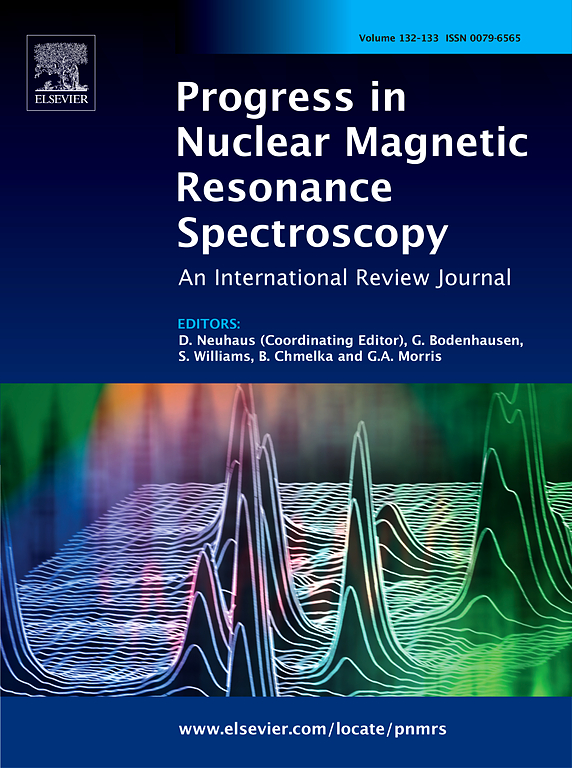Cardiovascular magnetic resonance imaging: Principles and advanced techniques
IF 8.2
2区 化学
Q2 CHEMISTRY, PHYSICAL
Progress in Nuclear Magnetic Resonance Spectroscopy
Pub Date : 2025-02-24
DOI:10.1016/j.pnmrs.2025.101561
引用次数: 0
Abstract
Cardiovascular magnetic resonance (CMR) imaging is an established non-invasive tool for the assessment of cardiovascular diseases, which are the leading cause of death globally. CMR provides dynamic and static multi-contrast and multi-parametric images, including cine for functional evaluation, contrast-enhanced imaging and parametric mapping for tissue characterization, and MR angiography for the assessment of the aortic, coronary and pulmonary circulation. However, clinical CMR imaging sequences still have some limitations such as the requirement for multiple breath-holds, incomplete spatial coverage, complex planning and acquisition, low scan efficiency and long scan times. To address these challenges, novel techniques have been developed during the last two decades, focusing on automated planning and acquisition timing, improved respiratory and cardiac motion handling strategies, image acceleration algorithms employing undersampled reconstruction, all-in-one imaging techniques that can acquire multiple contrast/parameters in a single scan, deep learning based methods applied along the entire CMR imaging pipeline, as well as imaging at high- and low-field strengths. In this article, we aim to provide a comprehensive review of CMR imaging, covering both established and emerging techniques, to give an overview of the present and future applications of CMR.

心血管磁共振成像:原理和先进技术
心血管磁共振(CMR)成像是评估心血管疾病的一种公认的非侵入性工具,心血管疾病是全球主要的死亡原因。CMR提供动态和静态多对比度和多参数图像,包括用于功能评估的电影,用于组织表征的对比度增强成像和参数映射,以及用于评估主动脉、冠状动脉和肺循环的MR血管造影。然而,临床CMR成像序列仍存在需要多次屏气、空间覆盖不完整、规划采集复杂、扫描效率低、扫描时间长等局限性。为了应对这些挑战,在过去的二十年里,人们开发了新的技术,重点是自动规划和采集定时、改进的呼吸和心脏运动处理策略、采用欠采样重建的图像加速算法、可以在一次扫描中获取多个对比度/参数的一体化成像技术、应用于整个CMR成像管道的基于深度学习的方法。以及在高场强和低场强下成像。在这篇文章中,我们的目标是提供CMR成像的全面回顾,涵盖了成熟的和新兴的技术,给出了CMR目前和未来应用的概述。
本文章由计算机程序翻译,如有差异,请以英文原文为准。
求助全文
约1分钟内获得全文
求助全文
来源期刊
CiteScore
14.30
自引率
8.20%
发文量
12
审稿时长
62 days
期刊介绍:
Progress in Nuclear Magnetic Resonance Spectroscopy publishes review papers describing research related to the theory and application of NMR spectroscopy. This technique is widely applied in chemistry, physics, biochemistry and materials science, and also in many areas of biology and medicine. The journal publishes review articles covering applications in all of these and in related subjects, as well as in-depth treatments of the fundamental theory of and instrumental developments in NMR spectroscopy.

 求助内容:
求助内容: 应助结果提醒方式:
应助结果提醒方式:


